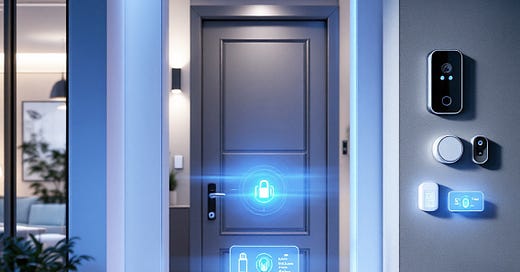
The Future of Smart Home Security
Smart home technology has radically changed the way we live. From voice-activated assistants to automated lighting and smart thermostats, our homes have become more connected, efficient, and convenient than ever before.
It’s an exciting time to embrace these innovations, but as we bring more devices into our homes, we also introduce new risks.
As someone who’s worked with individuals and businesses to enhance their security, I often hear the question: “How can I make my smart home secure without sacrificing convenience?” It’s a great question—and one that’s more relevant than ever.
In this article, I’ll walk you through the challenges of smart home security, the risks to be aware of, and the steps you can take to ensure your home is both smart and safe.
Why Smart Homes Need Smarter Security
Every connected device in your home—whether it’s a smart speaker, a security camera, or even your refrigerator—can be a potential entry point for cybercriminals.
While these devices make life easier, they also create vulnerabilities if not properly secured.
The consequences of a breach can be severe:
Privacy violations: Hackers could access sensitive data, such as voice recordings or video footage from security cameras.
Network infiltration: A weak link in your smart home network could allow attackers to access other connected devices, including laptops or personal accounts.
Device control: In some cases, cybercriminals can take control of devices like smart locks or thermostats, creating safety concerns.
The bottom line? While smart homes offer incredible convenience, they also require proactive security measures to protect your family and your data.
Connect with me on LinkedIn for more insights and updates.
3 Steps to Secure Your Smart Home
If you’re like me, you want to enjoy the full benefits of smart home technology without worrying about potential risks. Here are three steps you can take to secure your smart home:
1. Secure Your Devices
Many people don’t realize that the default settings on smart devices often leave them vulnerable to attack.
Always set strong, unique passwords for every device.
Enable two-factor authentication (2FA) whenever it’s available.
Keep your devices updated with the latest firmware to patch potential vulnerabilities.
2. Protect Your Network
Your home Wi-Fi network is the backbone of your smart home, so securing it is essential.
Change the default name and password of your router.
Use WPA3 encryption to provide the highest level of security.
Consider setting up a separate network for your smart devices to isolate them from your main network.
3. Work with an Expert
Designing a smart home system that’s both secure and functional can be complicated. That’s where I come in. I work with homeowners to create tailored solutions that prioritize security without sacrificing convenience.
From selecting the right devices to configuring your network, I can help you build a system you feel confident about.
The Future is Bright—but Stay Vigilant
Smart homes are the future, and I believe they can make our lives better in countless ways. But as with any new technology, it’s important to approach it with a security-first mindset.
By taking these precautions, you can enjoy the convenience of a connected home with the peace of mind that your family and data are safe.
If you’re ready to build a smarter, more secure home, I’d love to help. Reach out today to discuss how we can design a smart home security system that works for you.
Contact me today to schedule a free consultation and explore how to enjoy the future of home living safely!












